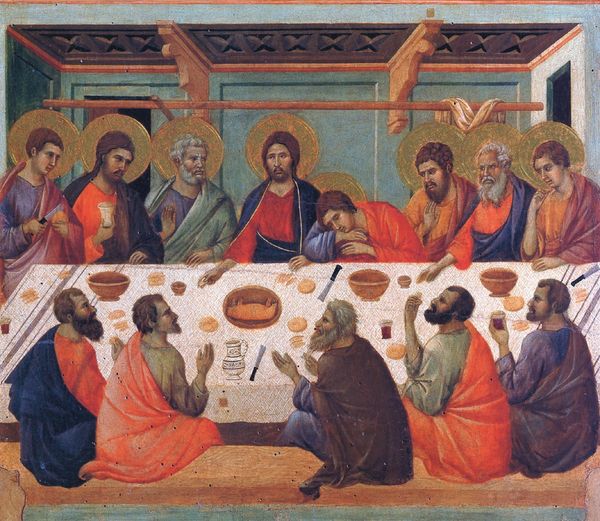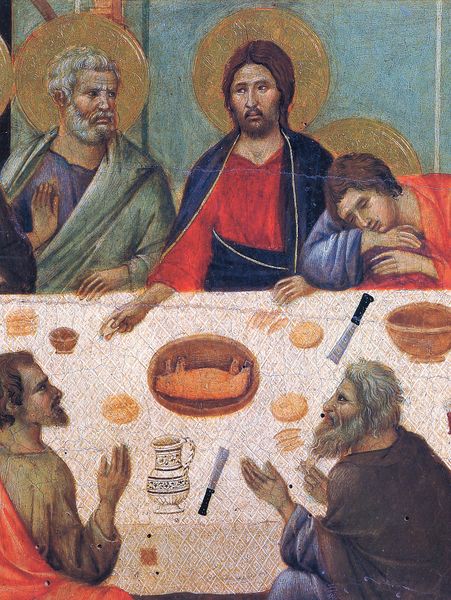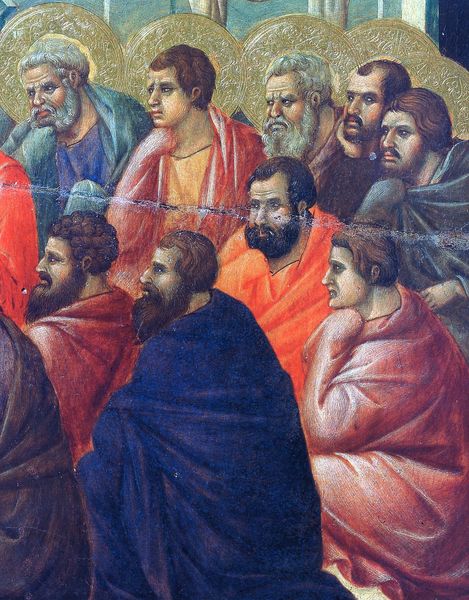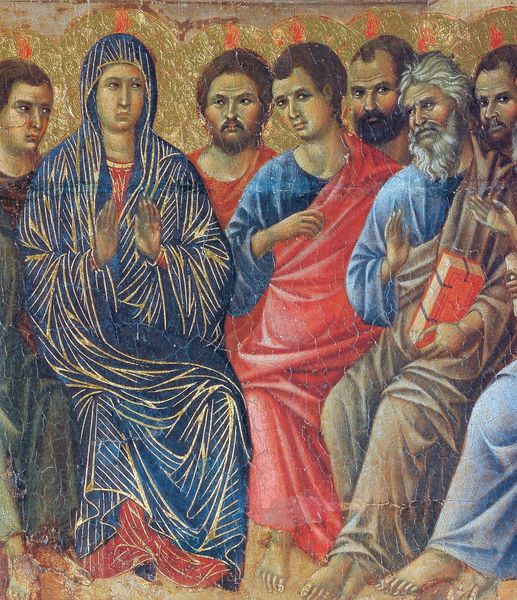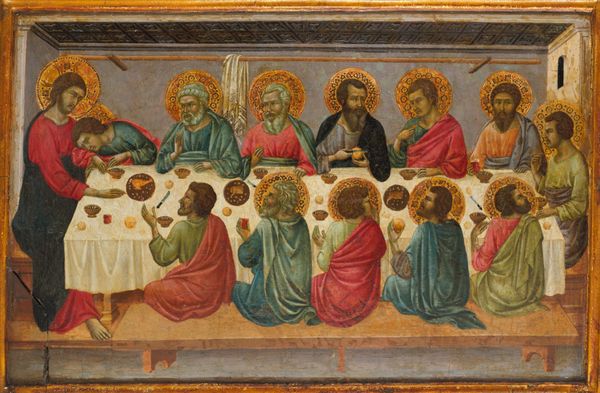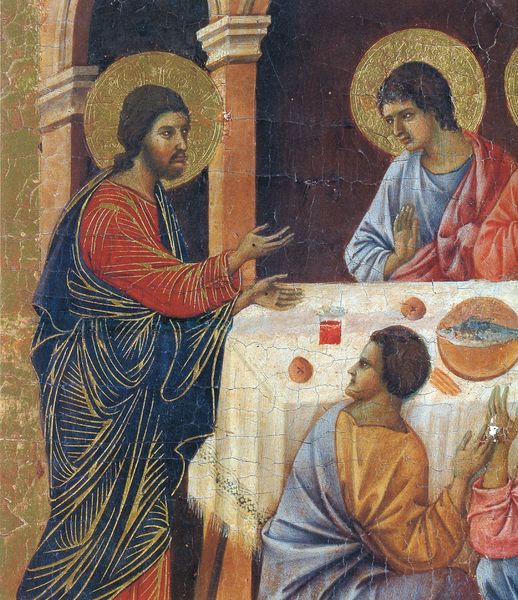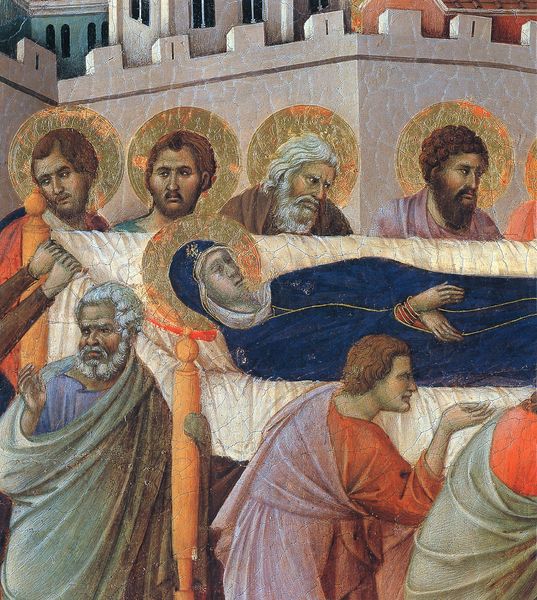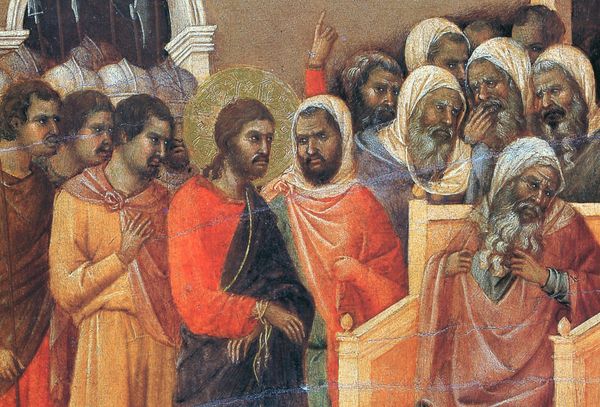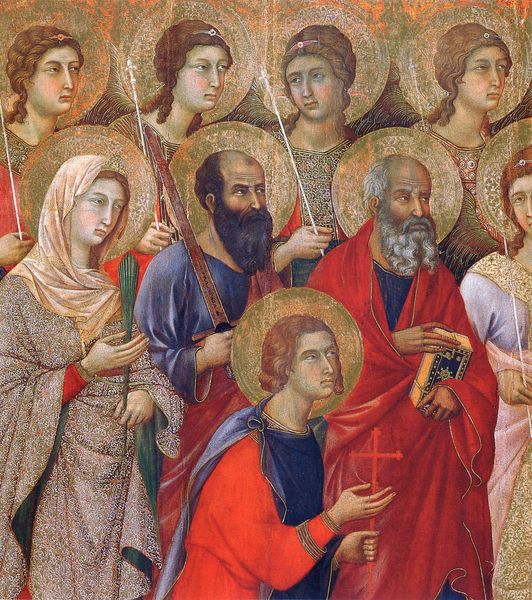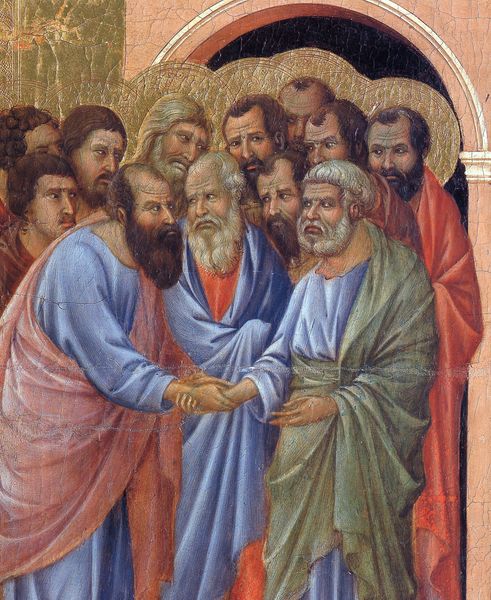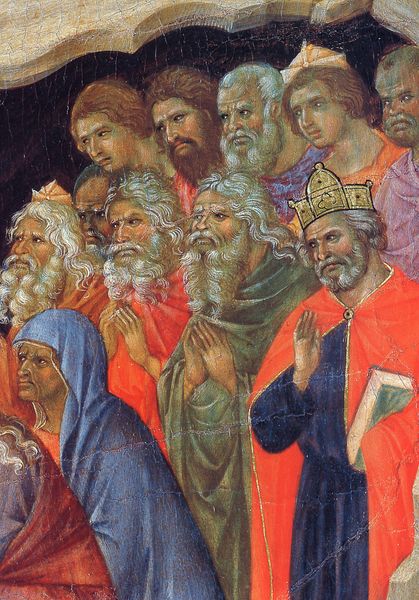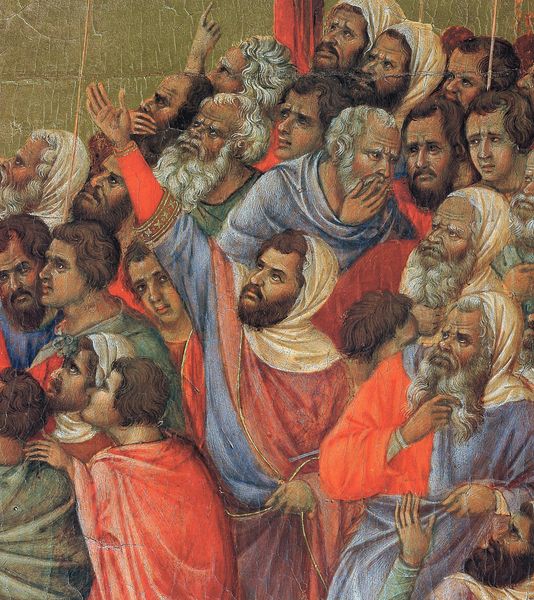
tempera, painting
#
portrait
#
tempera
#
painting
#
sienese-school
#
holy-places
#
oil painting
#
group-portraits
#
christianity
#
painting painterly
#
history-painting
#
italian-renaissance
#
portrait art
#
christ
Copyright: Public domain
Editor: So, here we have a fragment from Duccio's "Appearance of Christ to the Apostles," dating back to 1311. It's tempera on wood. I find the solemn expressions and the crowded composition so compelling, like a captured moment of profound realization. How do you interpret this work within its historical context? Curator: Considering Duccio’s “Appearance of Christ to the Apostles” from a historical lens, we must think about the function of imagery in the early 14th century. It was deeply tied to the church, serving didactic purposes. What do you notice about the composition, and how do you think it influences its reception? Editor: Well, there's definitely a clear hierarchy with Christ central and framed. It directs your eye immediately, lending a dramatic effect to the painting. Does that hierarchical representation reinforce the sociopolitical order of the time? Curator: Precisely! And consider that this work was likely part of a larger altarpiece, commissioned by a specific religious institution. It speaks to the patronage system of the time and how that dictated the content, style, and ultimately, the message of art. How might the Sienese School conventions have further shaped this painting's cultural significance? Editor: The Byzantine influence is so obvious: the golden backgrounds, and the stylized figures contribute to a sense of the divine, something transcendent from ordinary experience, that might lend the image more political "authority". Curator: Exactly. It's about power as much as faith. The image doesn’t just depict a biblical event, it participates in an ongoing construction of authority. Considering this, what new insights can we draw? Editor: That the image served not just as devotion, but as power projection; its function extended into political and social dimensions far beyond its pure religious purpose. Thank you! Curator: And I now recognize that the painting really had a political significance, as well as devotional. Thanks to your observation on the Sienese features, the piece projects the authority that only historical perspective could highlight.
Comments
No comments
Be the first to comment and join the conversation on the ultimate creative platform.
